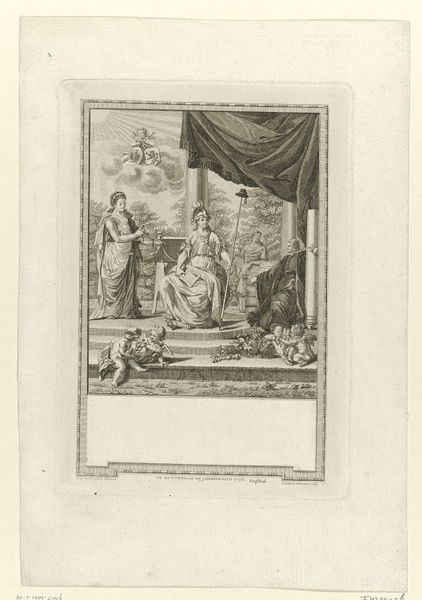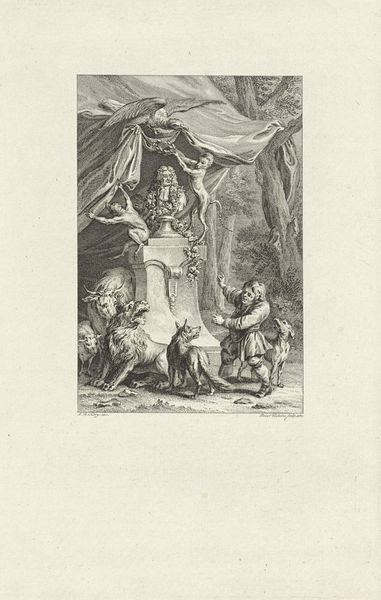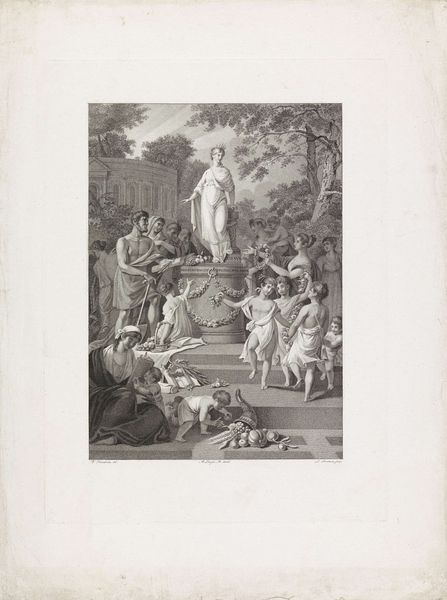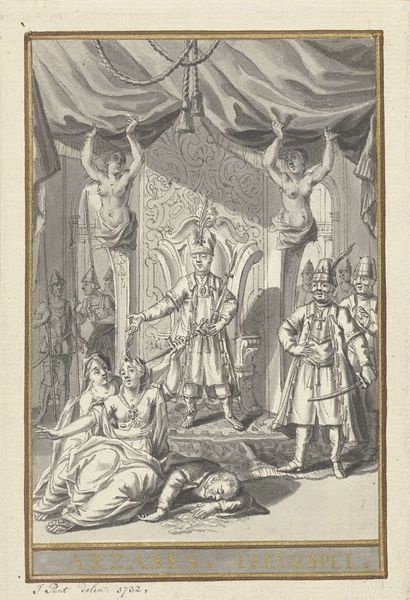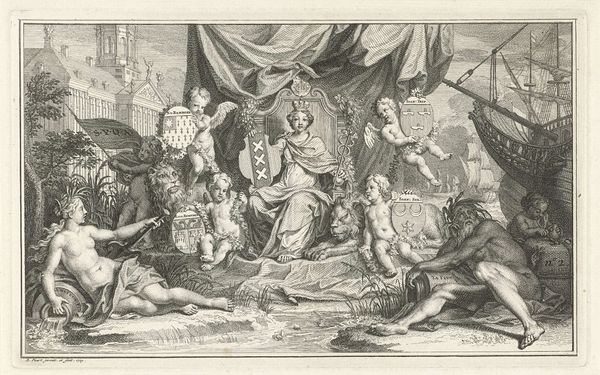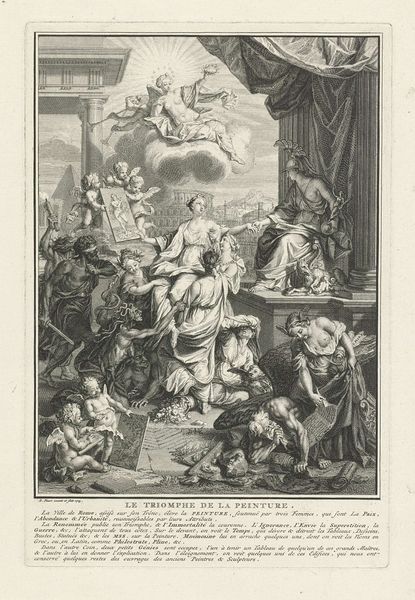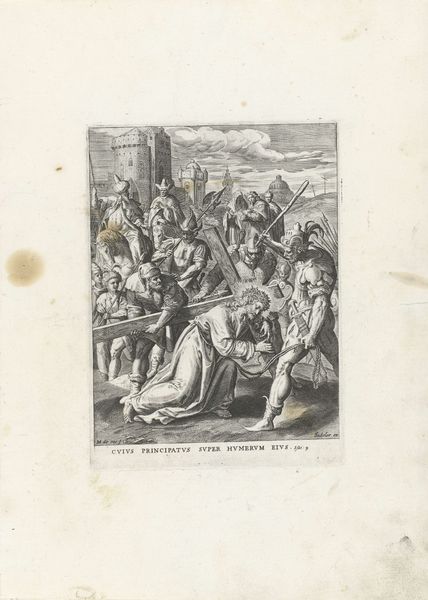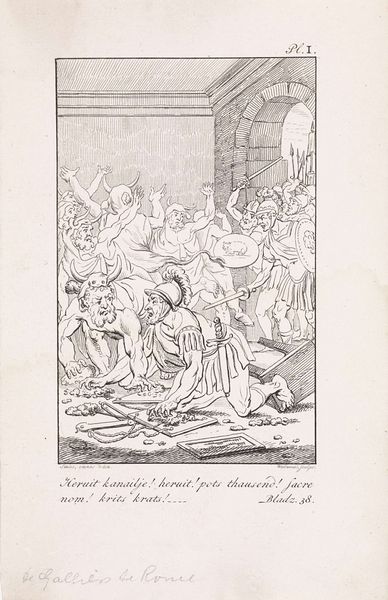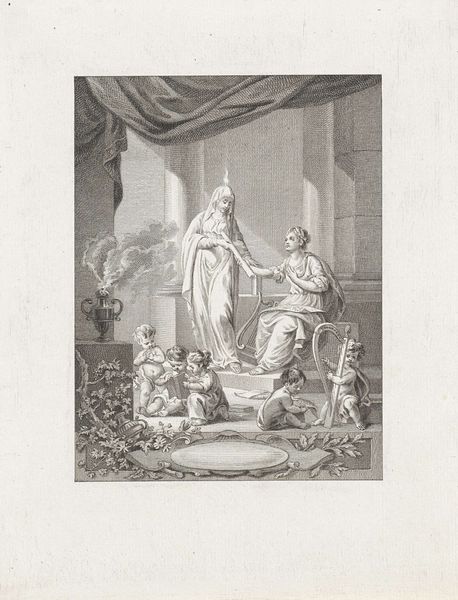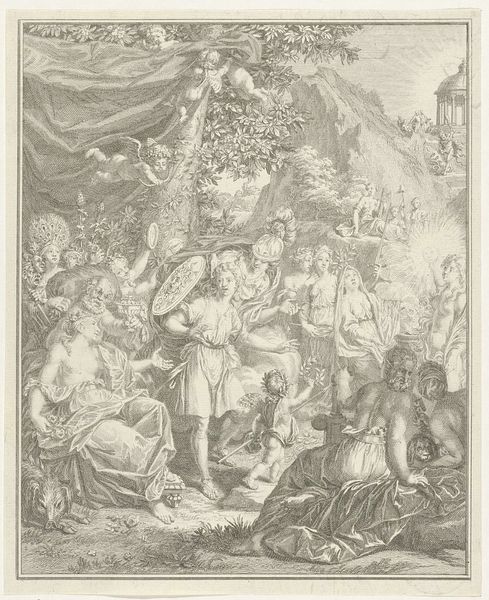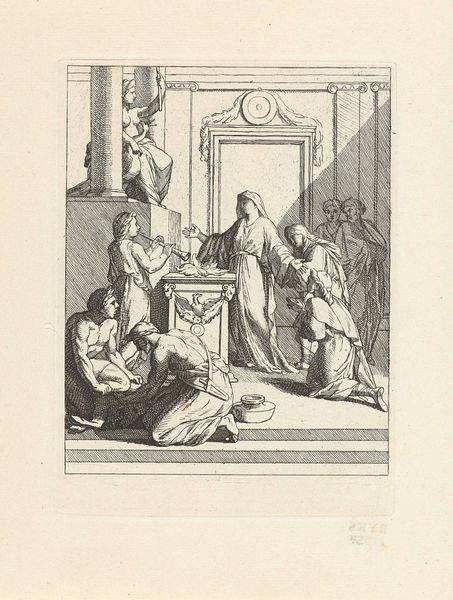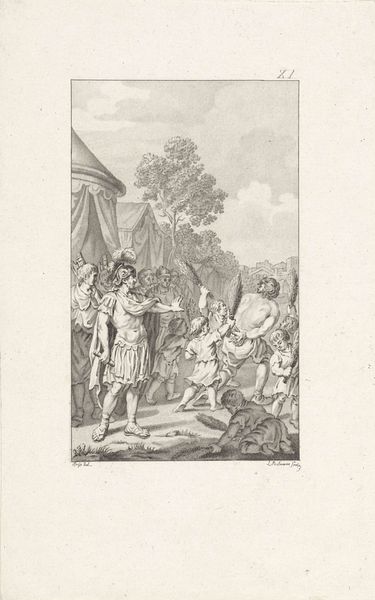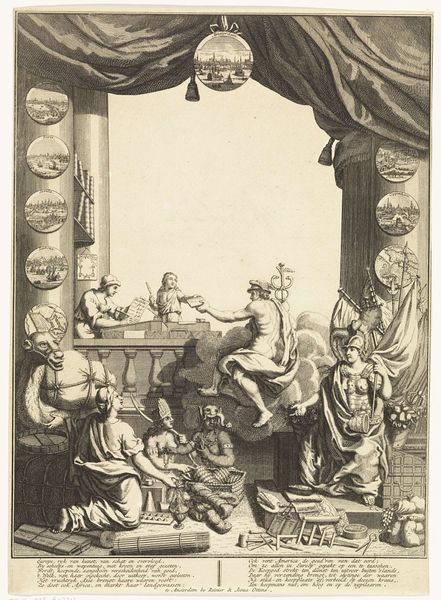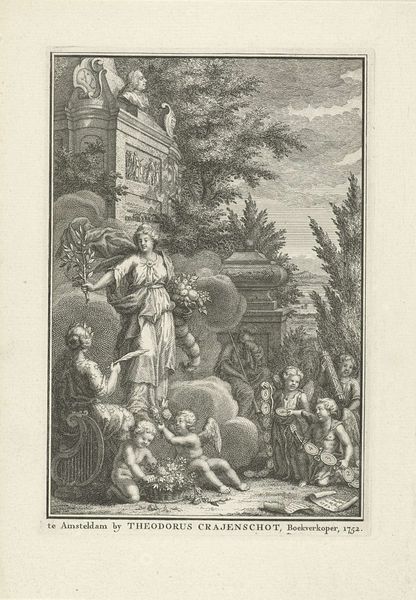
print, engraving
#
allegory
#
baroque
#
ink paper printed
# print
#
old engraving style
#
white palette
#
figuration
#
line
#
history-painting
#
academic-art
#
engraving
Dimensions: height 195 mm, width 151 mm
Copyright: Rijks Museum: Open Domain
Curator: This is Jacob Folkema's engraving from 1736, titled "Tronende personificatie van de Republiek der Nederlanden," or "Throned Personification of the Republic of the Netherlands." Editor: My immediate impression is one of formality, of elaborate allegorical representation, characteristic of the Baroque aesthetic and seemingly meant to elevate its subject to a level of timeless grandeur. Curator: Absolutely. Consider the way Folkema employs line to construct this rather complex allegorical scene. The density and precision, particularly in rendering drapery and textures, demonstrates his mastery of the engraving technique, emphasizing depth and volume. Editor: Indeed, the texture! And it's precisely within that textural and compositional framework that the piece begins to unlock itself to interpretation. Note the central figure, enthroned, literally wearing the face of the republic, receiving tributes and blessings from various figures. There's Neptune with his trident, an almost Cyclops figure forging tools or weapons. It speaks volumes about the Dutch Republic's sources of power and prosperity. Curator: Precisely. And the inclusion of figures such as Neptune suggests the Netherlands’ dominion over the seas, its significant maritime power in the 18th century. Furthermore, Mercury indicates commerce and diplomatic skill and that the virtues surround her— Prudence, Justice, and Liberty, to name a few—suggest the philosophical principles the Republic claimed to uphold. Editor: Yes, there's an interesting tension, isn't there, between these allegorical figures and the grittier scene with the cyclopean blacksmith at the bottom. I find the positioning of those chubby, cherubic figures right next to what seems to be back-breaking labor to be particularly compelling. Is that meant to signify divine providence or perhaps a commentary on class structure? Curator: It is precisely that type of relationship between light and shadow that demonstrates Baroque artistic strategies to stage power through rhetorical allegory. Editor: And with all the classical symbolism, Folkema gives us insight into the cultural self-fashioning of the Dutch Republic at that specific moment. He encapsulates Dutch national identity into recognizable cultural tropes. Thank you for bringing to light such exquisite visual analysis. Curator: A pleasure. The density and richness in engraving invites this continuous probing, which, by revealing layer after layer of encoded meanings, adds immeasurably to its worth.
Comments
No comments
Be the first to comment and join the conversation on the ultimate creative platform.
